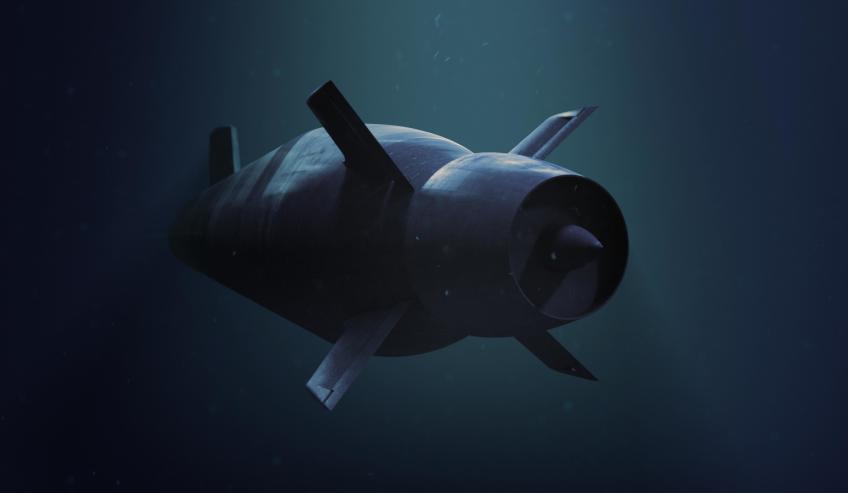State defence ministers have forgone state rivalries for the sake of Australian industry, penning a letter to a Senate inquiry into the naval shipbuilding industry.
South Australia's Minister for Defence Industries Martin Hamilton-Smith, Victoria's Minister for Industry and Employment Wade Noonan and Western Australia's Minister for Defence Issues Paul Papalia have joined forces to address their concerns about the Future Submarine Program (FSP), Australia's largest ever defence acquisition.
The trio state that the federal government must mandate a minimum of 60 per cent of Australian industry involvement of the contract value on each stage of the $50 billion project.
The ministers have argued that, without said mandate, Australia will not have the ability to develop truly sovereign naval capabilities.
The letter has eight policy approaches to ensure Australian industry has appropriate opportunities to participate in the FSP.
1. The prime contractors for the future submarine program, Naval Group (formerly known as DCNS) and Lockheed Martin, must be contractually obliged to work with the Department of Defence to optimise Australian industry involvement in this program. Consideration must be given to the establishment of a minimum level of Australian industry participation by value of the contract entered into. It is noted that the Minister for Defence Industy Christopher Pyne has publicly confirmed the government's expectation of high levels of Australian industry involvement.
2. Contracts with Naval Group and Lockheed Martin should mandate minimum Australian industry involvement by value for each stage of the program, and an overall program benchmark should be a minimum of 60 per cent. This should be informed by the identification of components of work that can be undertaken by Australians, and the identification of organisations that have the capability or potential capability to perform the work.
3. A contractual obligation should stipulate that Australian organisations must receive, apply and develop the technology and know-how from Naval Group and Lockheed Martin, subject to appropriate national security, commercial and intellectual property arrangements.
4. The contracts with Naval Group and Lockheed Martin should oblige the prime contractors to work with relevant organisations that have knowledge of and contact with Australian defence industry companies and their capabilities, and which can provide a clearinghouse role for the primes to access local industry. Contractual incentives should be considered to further maximise local work.
5. The same approach should be adopted in relation to the research and scientific endeavour to develop and support the submarines. It is in the national interest that knowledge is transferred from overseas and embedded in the Australian research community in order to develop, construct and maintain the submarines, and its design and technological evolution, in the decades ahead.
6. Naval Group and Lockheed Martin should be contractually obliged to establish a clearinghouse in conjunction with the Defence Science and Technology Group for access to Australian research and development knowledge as portals for accessing the appropriate expertise in the Australian scientific community.
7. To reinforce the strategic and economic importance of Australian industry involvement in the program, the Commonwealth government should require that an Australian citizen be chairman of Naval Group Australia. A minimum number of Australian citizens on the board should also be stipulated.
8. A target year should be set for an all-Australian workforce working on the construction and maintenance of Australian submarines.
The letter comes after "damning evidence" was presented at a Senate hearing that Senator Nick Xenophon said indicated Naval Group had backed away from its initial local build and assembly commitment.
Naval Group Australia chief executive Brent Clark said that, while he was reluctant to put a figure forward until one has been finalised, "from our perspective we would imagine that at least – at least – an aim point of greater than 60 per cent would be something that we aim for".
Now Xenaphon has said the company has backed away from its initial commitment to Australian industry, reducing it to a "rubbery" figure of 60 per cent.
"Sixty per cent falls well short of the 70 per cent achieved during the build of Collins and the 90 per cent promised for the Future Submarine Program by Minister Pyne on Q&A last year and by DCNS before a parliamentary committee in March this year," said Xenophon.
A spokeswoman for Minister Pyne told Defence Connect the government will ensure Australian industry contribution is maximised and is aiming for benchmarks previously set by the Collins Class submarines.
"It is the Turnbull government that has made a virtue of Australian industry content. No government before, Labor or Coalition, has made a bigger commitment to using the heft of the defence build-up to drive industry, jobs and research and development," the spokeswoman said.
"The fleet of 12 new submarines will be built in Australia, by Australians, using Australian steel, creating over 2,800 jobs.
"The government will ensure Australian content is maximised in the $50 billion future submarine program and is currently in the process of finalising these details with DCNS.
"A recent review of the Collins Class submarines found that the Australian industry content sits around 82 per cent. It is these kind of benchmarks that we are looking to leverage across our shipbuilding programs.
"Every decision the Turnbull government has made reinforces this commitment.
"No government has been more committed to Defence and defence industry than this Coalition government."
Naval Group was awarded the Future Submarine contract in 2016. Construction of the 12 submarines will begin in 2021-22.
The first of the 12 submarines is likely to begin entering service in the early 2030s. Construction will extend into the late 2040s to 2050 timeframe.






